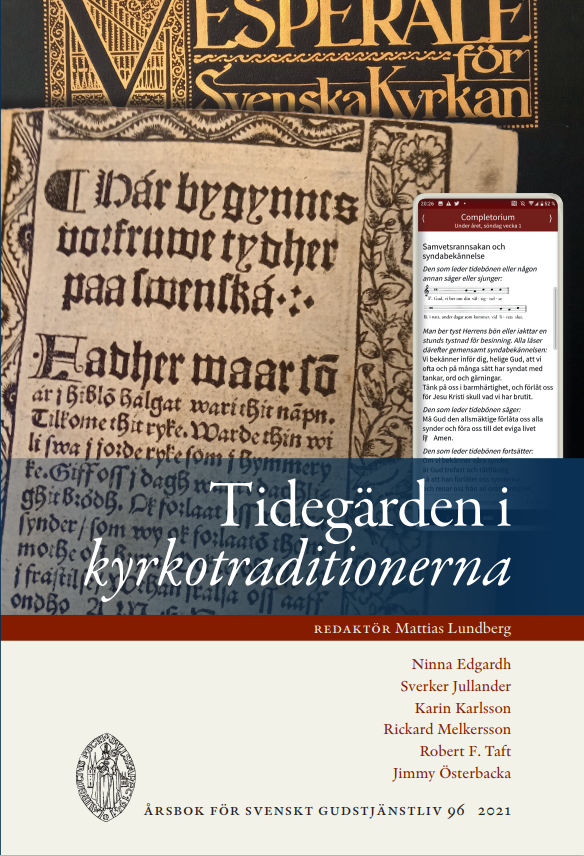Facebook-streamed Prayers for the Hours of the Office as an Ecumenical Tendency
Abstract
The present article is an attempt to explore receptive or ”convergent” ecumenism at a digital grass-root level during the global covid-19 pandemic. It is a case study of digital Vesper and Compline, live-streamed over Facebook via a personal user profile. In these hours participants pray with a prayer book of daily hours of the office issued by The Ecumenical Community at Bjärka-Säby (EKiBS). By using an ethnographical approach the author has interviewed one of the key persons behind the streamed office hours about this form of prayer in a digital ”room”, the use of daily prayer liturgies during the pandemic, prayer-requests from those participating, and about the book of hours by EKiBS, Tideböner under året. It is important to note that in this kind of research one participates in the generation of data without necessarily knowing where the research process will lead.
The study furthermore explores some of the written prayers in Tideböner under året by Peter Halldorf that explicitly constitute prayers for ”unity”. The author attempts to analyze what kind of unity it is that is prayed for through participation in these hours of the office. In both the interviews and in the study of the prayers it may be observed and demonstrated what kind of ecclesial imaginations and concepts of unity that are at work. It is concluded that a receptive ecumenical spirituality is manifested here, and that it may possibly be seen as something of an ”extension” of the spirituality that emanates from EKiBS, which is interesting since EKiBS have until recently been rather cautious with the use of social media.
Downloads
Published
Issue
Section
License
Copyright (c) 2022 Jimmy Österbacka

This work is licensed under a Creative Commons Attribution-NonCommercial-NoDerivatives 4.0 International License.
© the authors, Laurentius Petri Sällskapet för Svenskt Gudstjänstliv and Artos & Norma Bokförlag. Copying and using material from Svenskt Gudstjänstliv for scholarly purposes is permitted as long as the source is indicated. For other uses, please contact the respective author as well as the publisher. Special restrictions may apply to images.


